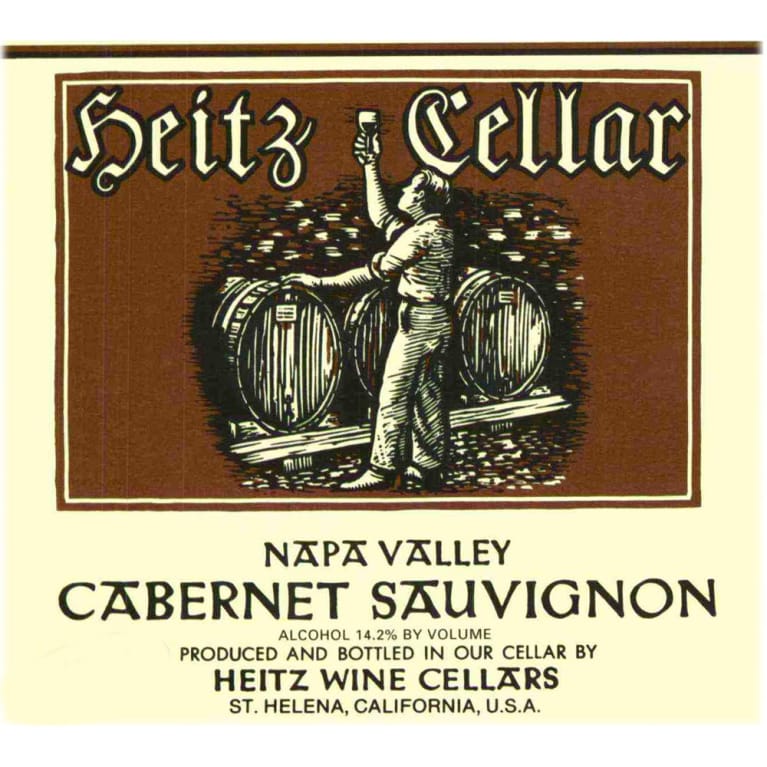
The cabernet is fermented in steel tanks. Heitz’s winemaking methods today are largely the same, and the wines are just as lively. They are perhaps a tad rustic, and the beloved acidity may one day be the last thing remaining, like the Cheshire cat’s grin. These would not be mistaken for contemporary wines. McCoy said has farmed organically since the 1980s, is converting 425 acres to biodynamic viticulture. The biggest immediate change is that Heitz, which Mr. McCoy put it, “understanding the significance of what we have and preserving it.”īrittany Sherwood, who joined Heitz in 2012 straight out of the viticulture and oenology program at University of California, Davis, and who learned under David Heitz, has stayed on as winemaker. Lawrence has simply entrusted the Heitz team to do whatever it needs to do to make the best possible wines squarely in the Heitz tradition, or, as Mr. Success might have been judged by measuring Heitz against other Napa baubles belonging to the tycoon cohort.

Lawrence, in the way of other new, wealthy owners of Napa Valley vineyards, to turn Heitz into a vanity project. His daughter Westin Lawrence came aboard as marketing and public relations liaison. Lawrence appointed Carlton McCoy Jr., 35, a young but celebrated American sommelier, as president and chief executive, and gave him the task of both charting a course back to prominence for Heitz and envisioning its path over the next 15 years. Two of his children, David Heitz and Kathleen Heitz Myers, ran the business until last year, when they sold the business to Gaylon Lawrence Jr., an agricultural magnate from Arkansas. Producers like Heitz, who despite occasional troubles have stood the test of time (and elsewhere might have been elevated to pantheon status), were eclipsed by wines that seemed to fit a more modern aesthetic. These tiny operations, which came to prominence in the 1990s, have parlayed scarcity and exorbitant prices to become Napa’s most coveted bottles. Helena, Calif., Heitz Cellar’s cabernet sauvignons, particularly its Martha’s Vineyard bottles, were among the most prized wines produced in Napa Valley.ĭespite this early acclaim, Heitz today is rarely mentioned among the Napa Valley elite, having long been overshadowed by the rise of Napa’s cult cabernet producers. Half a century ago, since shortly after Joe and Alice Heitz bought a small property in 1961 in St. But today? Heitz is practically singular. Many Napa cabernets might have been made with similar methods back in the 1970s. The Heitz method of making cabernet sauvignon, with a premium on high acidity and low pH, runs counter to many cherished current beliefs about how great wine ought to be produced. But to the contemporary way of thinking about wine, or at least my way of thinking, they were hard to figure. Today, the wines produced by Heitz Cellar get made with organically-farmed grapevines with a sustainable approach throughout all the processes.These wines were superb. They have worked with a commitment to producing high-quality wines. The family had their roots deep into the art and business of agriculture. It changed hands and went under the ownership of the Lawrence family. In April of 2008, Heitz Cellar stepped into an exciting and new chapter of its legacy. They have increased the winery’s fame to a level where it serves as a benchmark among its peers in Europe and California. The Heitz family has remained dedicated to stewardship, classic winemaking, and viticulture.

It included the initial vineyard-designated grape variety of Cabernet Sauvignon of the region. He did so with his globally-celebrated and iconic wines. Around the end of the 1950s, Joe Heitz, a pioneering vintner, ushered the winemaking industry of Napa Valley into a modern era.

Furthermore, the winery served as one of the most significant factors that shaped the winemaking history of Napa Valley. However, it has become a legend in the wine business over the years. Heitz Cellar has remained a family-owned winery since its establishment. For that reason, it is no exaggeration to say that its legacy runs almost as deep as the roots of the wine industry in Napa Valley. Only about two dozen wine estates could survive and stay in operation, with Heitz Cellar being one of them. At that time, the population and number of wineries in the Napa Valley reduced significantly. The estate got established by Alice and Joseph (Joe) Heitz in 1961. The winery remains situated in a place east of St. Heitz Cellar is a renowned wine producer from California located in Napa Valley.


 0 kommentar(er)
0 kommentar(er)
